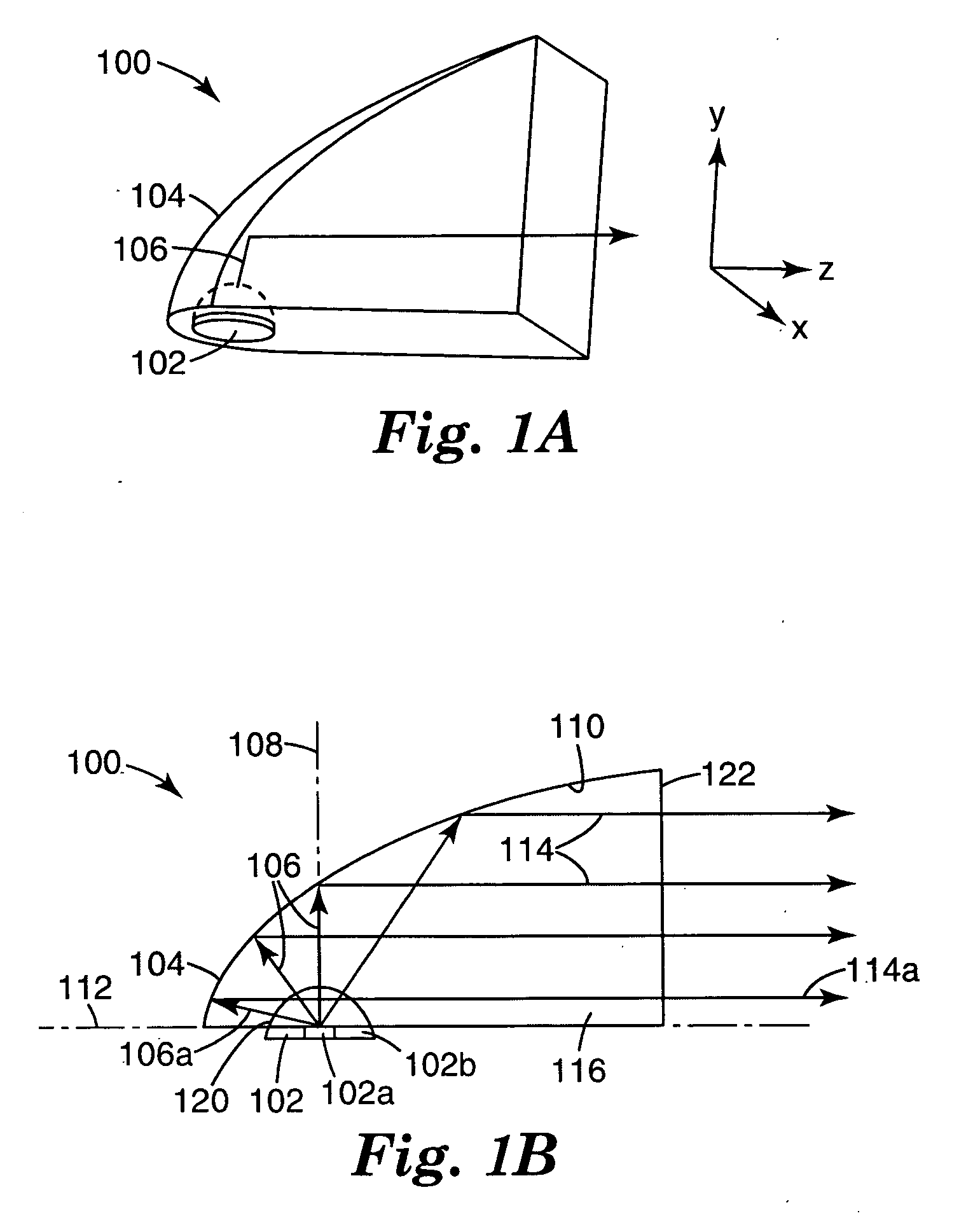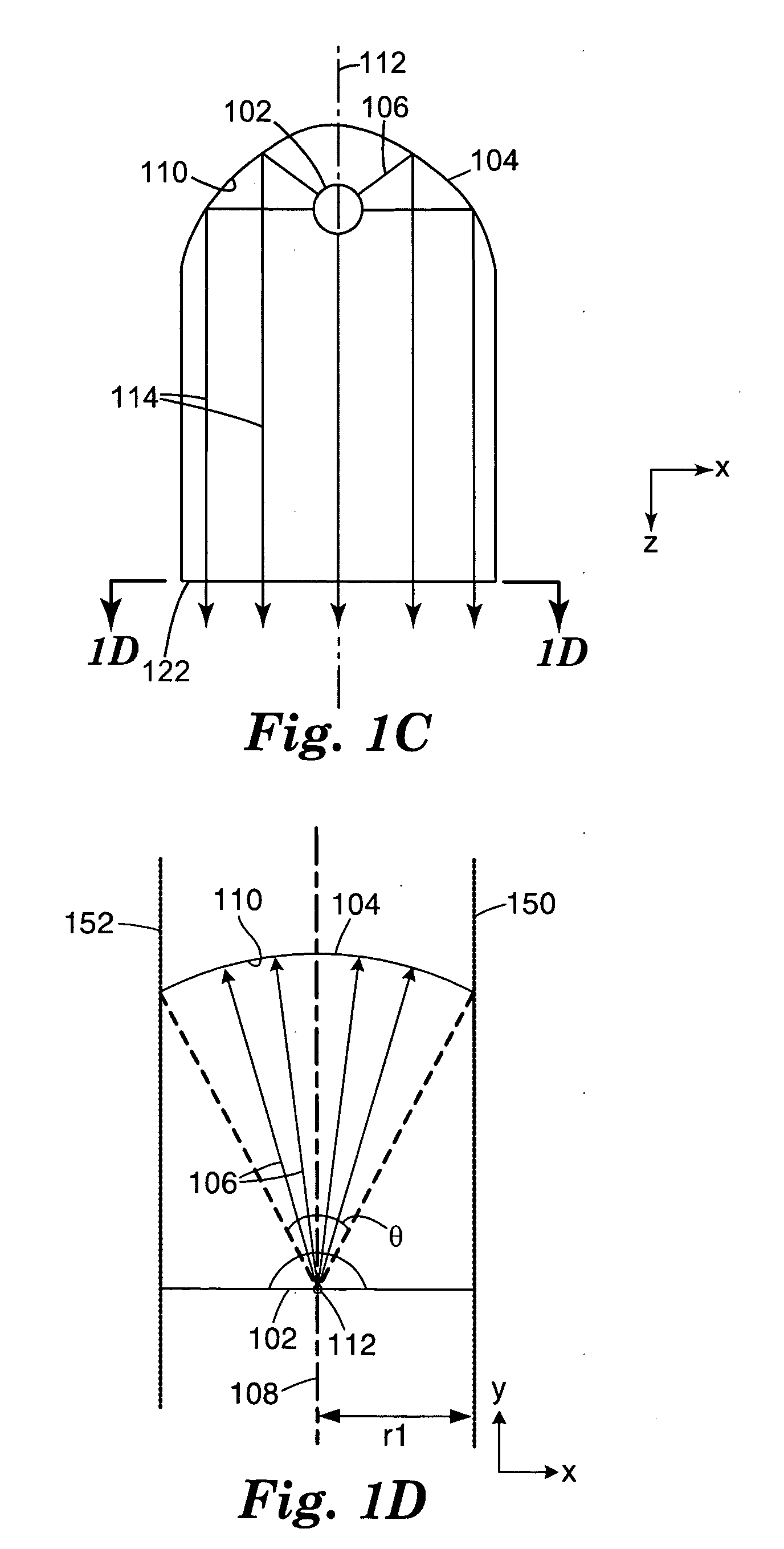Illumination system using multiple light emitting diodes
- Summary
- Abstract
- Description
- Claims
- Application Information
AI Technical Summary
Benefits of technology
Problems solved by technology
Method used
Image
Examples
example 1
[0058] An exemplary embodiment of an illumination module 800 used in a sub-unit to generate beam 1 is schematically illustrated in FIG. 8A. The module 800 includes an LED 802, a paraboloidal reflector 804, and an output surface 806. The paraboloidal reflector 804 has a value of R=10 mm, a depth, d=36 mm and the output surface is square with a height and width, h and w, equal to 24 mm. The output surface 806 of the module 800 is flat. The desired angular aperture from the sub-unit is ±2° vertically and ±5° horizontally. Accordingly, the amount of light, P, generated by a single illumination module into this angular aperture can be calculated as:
P=Po×CE×L1×L2 (1)
where P0 is the amount of light output from the LED, CE is the geometrical light collection efficiency, L1 is reflectivity of the reflector and L2 is the transmission through the output surface of the module. The value of CE, for this particular angular aperture can be calculated to be 42.1%. The value of L1, the reflectiv...
example 2
[0060] An exemplary embodiment of an illumination module 900 used in a sub-unit to generate beam 2 is schematically illustrated in FIG. 9A. The module 900 includes an LED 902, a paraboloidal reflector 904, and an output surface 906. The paraboloidal reflector 904 has a value of R=9 mm, a depth of d=30.5 mm. The output surface 906 is square with a height and width, h and w, equal to 20 mm. The output surface 906 of the module 900 has a cylindrical surface with a radius of curvature equal to 19 mm. The use of a curved output surface 906 may increase the spread of light in the horizontal direction. The desired angular aperture from the sub-unit is ±5° vertically and ±35° horizontally. The geometrical collection efficiency, CE, into this angular aperture can be obtained from FIG. 6C as about 79%. The amount of light, P, generated by a single illumination module into this angular aperture can be calculated using expression (1) as 60.1 Lumens, where the values of L1 and L2 are as given in...
PUM
 Login to View More
Login to View More Abstract
Description
Claims
Application Information
 Login to View More
Login to View More - Generate Ideas
- Intellectual Property
- Life Sciences
- Materials
- Tech Scout
- Unparalleled Data Quality
- Higher Quality Content
- 60% Fewer Hallucinations
Browse by: Latest US Patents, China's latest patents, Technical Efficacy Thesaurus, Application Domain, Technology Topic, Popular Technical Reports.
© 2025 PatSnap. All rights reserved.Legal|Privacy policy|Modern Slavery Act Transparency Statement|Sitemap|About US| Contact US: help@patsnap.com



